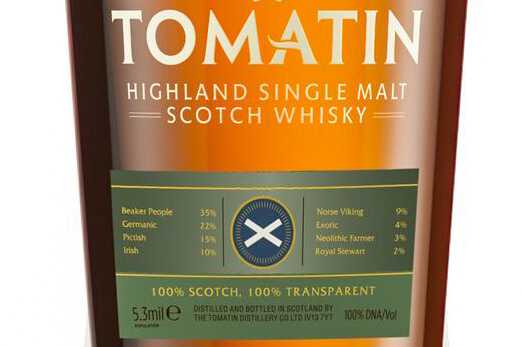What makes up a Scot?

At the time when Europe – and not only the Old Continent, come to think of it – hears more and more of the xenophobic movements, all kinds of nationalists and “patriots”, it might be well-worth looking into what, in truth, at the biological level a given nation is, what kind of genes we bear, who our ancestors were. Perhaps if we realised the true composition of our DNA, it would not come so easy to slight members of other nations, faiths, communities or races.
The above extremely serious introduction is in fact meant as a lead-in to a kind of game that the Tomatin distillery decided to offer us. A distillery that seems to experience an identity problem of a kind itself – trying to decide whether it is in the Highlands or in Speyside. The World Whisky Day, celebrated all over the world last Saturday was an occasion for Tomatin to invite leading DNA specialists, Source BioScience to analyse the biological composition of the Scottish nation. In other words, they were asked to analyse the ingredients from which the Scottish blend was made up.
The research indicated that the veins of your average Scot are definitely filled with a blended type of blood. The Scots, on average, are made up of Beaker people in 35%, a people originating from the Iberian Peninsula, in 22% from Germanic culture. The average Scot is 9% Norse Viking and 3% Neolithic Farmer. Scottish ancestry is derived in 15% from the mighty Picts, the people the Romans feared so much they had to erect a Hadrian’s wall to protect themselves from in the 2nd century AD. What is interesting, 10% of the Scottish genes can be traced back to the Irish, a discovery that could possibly end up the dispute about who in fact invented whisky in the first place. Finally, the average Scot DNA has 4% exotic influences (mainly African and south Asian), as well as 2% (!) from the descendants of Sir John Stewart of Bonkyll, a military man from the times of the Scottish War of Independence and the Battle of Falkirk.
One would only wish similar research was made into the DNA of your average Pole. AS opposed to the rather insular island dwellers, the land we currently inhabit has been the melting pot of the various nations and ethnic groups for thousands of years. We are actually looking forward to reading about what kind of a blend the “real Pole” is.
[Zdjęcie: destylarnia Tomatin]